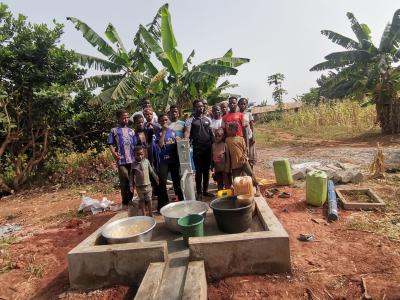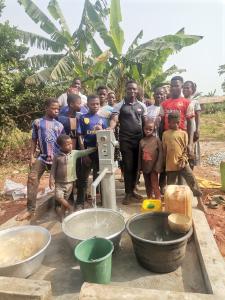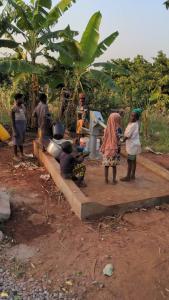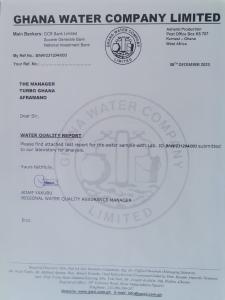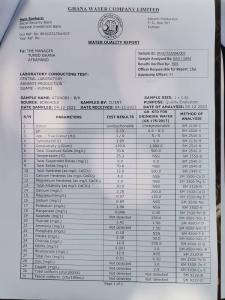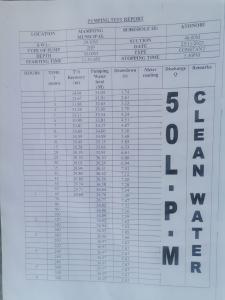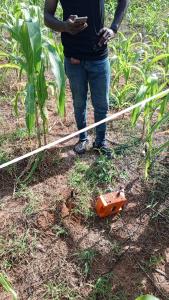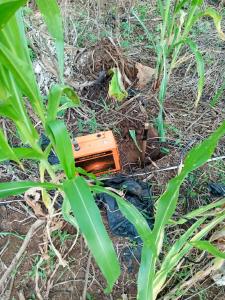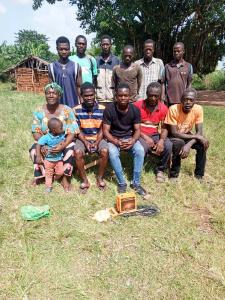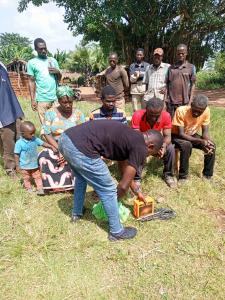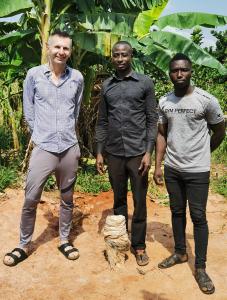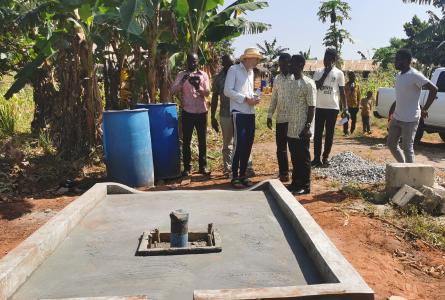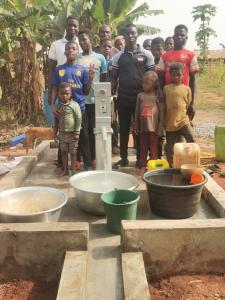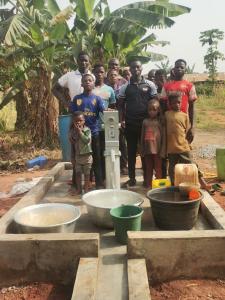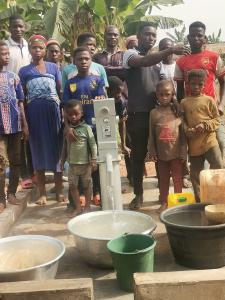Borehole at Atonobi
Presenting the completed project
Click on any photo for a large version
We built the borehole during the period October 2023 to January 2024. It looks great and works perfectly! The borehole provides water to a community whose only water was by walking 30 minutes to a stream (of dirty water). Borehole location
Water quality report
The water quality report seems very good. All parameters are within acceptable limits. The only remarkable point is that the pH value is 5.73, which means the water is a bit acidic. The effects of drinking slightly acidic water seem to include both positives and negatives.
Rationale and planning for the project
Click on photos for large version.
Atonobi is a small settlement near Kontonho, which is itself a satellite community of Aframano. Kontonho has about 170 people, and is about two hours walk from Aframano. Turbo Ghana first visited Kontonho in 2022, when we met Amos and his family. Like everyone in this area, they are farmers. Kontonho has no electricity and no water. The nearest water source is 30 minutes walk away.Kontonho is small, but there are many satellite communities around it. Atonobi is one of them. The distance of these settlements from water makes it an ideal place to site a borehole.
Planning where to put the borehole
Kontonho is served for water by two rivers, both of them 30 minutes walk away, so initially the community thought to put the borehole in Kontonho. But their decision was to site borehole at Atonobi, because it will be able to serve a greater number of people due to the distribution of other settlements, some of which are an hour away from water at present.
If we build a borehole in Atonobi, about 150 adults and many more children will be able to access fresh water.
Women and children
The 30-60 minute walk to the river is primarily undertaken by children, and sometimes their mothers. Mark talked to children about their work fetching water. Nana Afia, age 10, walks to the river four times each day. At the moment we talked to her, she had been twice so far that day, and would go twice more later in the day. Sakina is a bit older. She goes seven times each day, and at the time she told us that she had been three times so far. A borehole in Antonobi will have a huge impact on these girls’ lives, and that of the other inhabitants of Kontonho and surrounds.Implementation challenges
Kontonho and Atonobi can be accessed only via a “hand-made” road with a very uneven surface and lots of obstacles. Normal cars can’t drive there. High-axle vehicle with big wheels, like delivery trucks, can get there with some difficulty. The community spend some days cutting branches and removing bushes to widen the road, so that the large drilling equipment can get access.Progress photos
Here are details of the project progress during its implementation
1 November 2023
After months of rain, we were able to start. The hydrogeologist came with some equipment to figure out the best place to site it. It seems from the pictures that he has a phone app that communicates with the orange device, which is measuring something by means of a pole that is sunk into the ground. We don’t know what is being measured, or how this works. Please enlighten us if you know!
These photos were sent to us by Kwasi. We’re happy to recognise some faces among the villagers, looking at the procedings with curiosity, and it seems the hydrogeologist was willing to pose for a nice group picture.
5 November
The prospecting company has sent us their report, and it seems encouraging.
They have identified three possible sites for a borehole, called A42, A35, and A30 in their report. Surprisingly to me, the two sites with the coordinates are only 4 metres apart. This seems rather small compared to the depth of the hole (70 to 120 metres). But overall this is very good news!
17 November
The drilling took place a couple of days ago (15 November). Kwasi went with the drilling company. It took about 3 hours to complete. The drilling machine is very loud. The drill is about 10m high, but drills to a depth of 70m. Eventually, water comes gushing out, to a height of about 2m, as if it’s under pressure. Then it stabilises to a trickle. The hole is about 10cm diameter, and as the drilling progresses they line it with hard plastic piping to stop it closing up.30 November
The water was tested for bacterial content and metal content. We haven’t yet got the result of the testing. If it proves unsuitable for drinking, that will be disappointing. But it would still be useful for washing and crop irrigation. A temporary pump was connected for the test to be done, and the villagers took the opportunity to get some water.12 December (during Mark’s visit)
When Mark visited in December 2023, the borehole had been drilled but neither the pump nor the concrete base had been done. By the end of my visit, the concrete base was done, but not yet the pump.
16 December 2023 (shortly after Mark came back to UK)
The pump was fitted and borehole was completed a couple of weeks after Mark left. It’s all finished and working.
